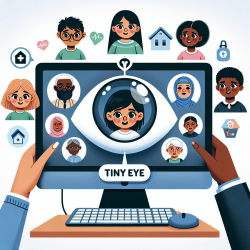In the digital age, social media platforms like YouTube, Twitter, and Facebook have become significant channels for disseminating information on various topics, including autism. As practitioners in speech-language pathology, understanding the digital trends surrounding autism can help us enhance our therapeutic approaches and better support our clients. The recent research article "Digital trends in autism: a scoping review exploring coverage of autism across YouTube, Twitter, and Facebook" offers valuable insights that can be leveraged to improve our practice.
Key Findings from the Research
The scoping review consolidated findings from 32 sources and categorized the content into 14 themes, including navigating everyday life, stressors and triggers, conceptualization of autism, behaviors, therapies, inequities, education, and more. Here are some key takeaways:
- Navigating Everyday Life: Content on social media often includes daily lived experiences and challenges faced by individuals with autism and their families.
- Stressors and Triggers: Topics like grief, psychological distress, financial struggles, and social isolation are commonly discussed.
- Therapies and Treatments: Recommendations for various therapies, including speech-language therapy and applied behavior analysis, are frequently shared.
- Neurodiversity: Emphasizing the uniqueness and strengths of individuals with autism, moving away from a purely medical model.
- Misinformation: The review highlighted the prevalence of misinformation, such as claims about curative diets and harmful treatments.
Implementing Research Outcomes in Practice
By understanding these digital trends, practitioners can tailor their therapeutic approaches to address the real-world challenges and experiences of individuals with autism. Here are some actionable steps:
- Stay Informed: Regularly monitor social media platforms to stay updated on the latest trends, challenges, and discussions related to autism.
- Address Misinformation: Educate clients and their families about the risks of misinformation and provide evidence-based resources.
- Embrace Neurodiversity: Incorporate neurodiversity principles into your practice, focusing on the strengths and unique abilities of individuals with autism.
- Leverage Social Media: Use social media as a tool for sharing credible information, success stories, and therapeutic strategies.
Encouraging Further Research
The digital landscape is ever-evolving, and continuous research is essential to keep pace with these changes. Practitioners are encouraged to:
- Conduct Surveys: Gather data from clients and their families about their social media usage and the types of content they find helpful or harmful.
- Collaborate: Work with researchers to explore new trends and develop innovative therapeutic approaches based on digital content analysis.
- Share Findings: Publish case studies and research findings to contribute to the collective knowledge and improve practices across the field.
To read the original research paper, please follow this link:
Digital trends in autism: a scoping review exploring coverage of autism across YouTube, Twitter, and Facebook.










